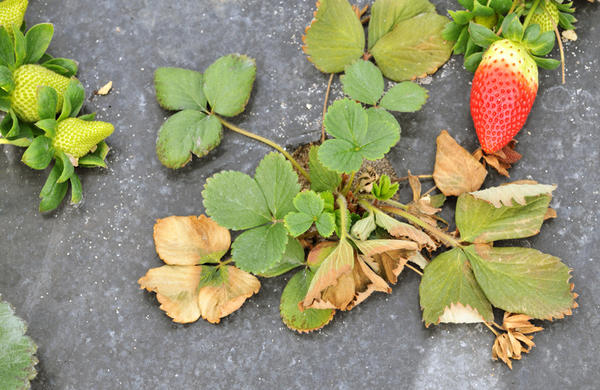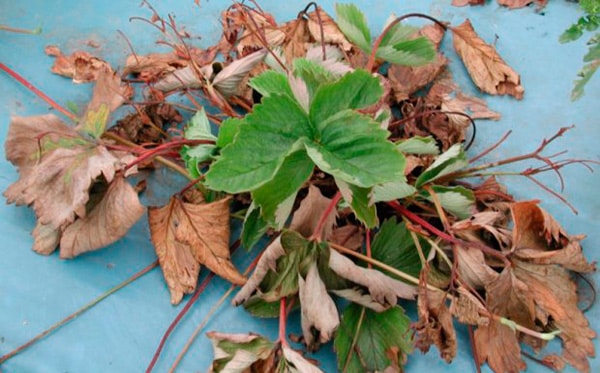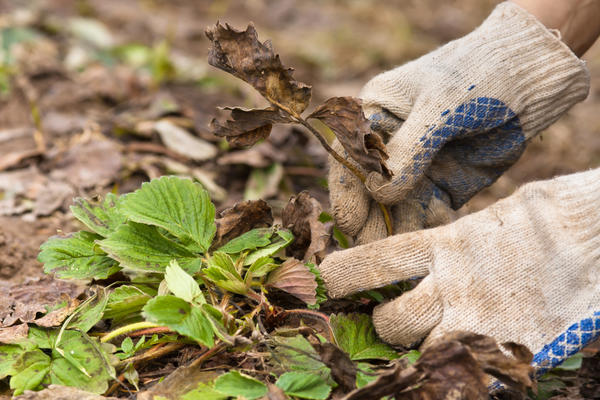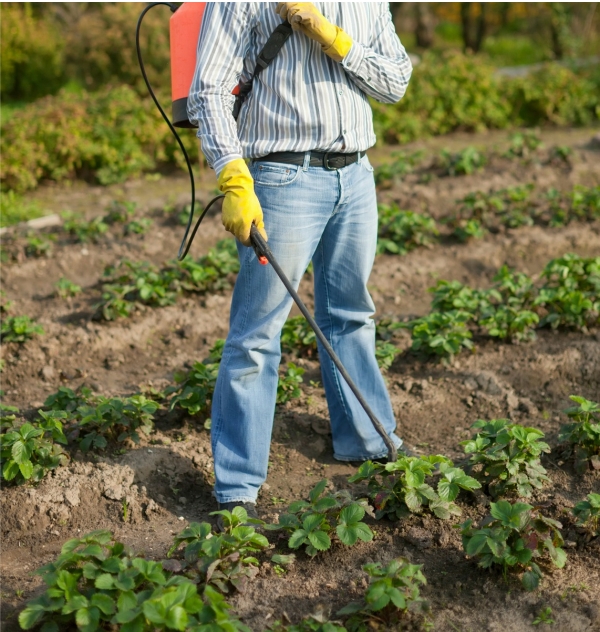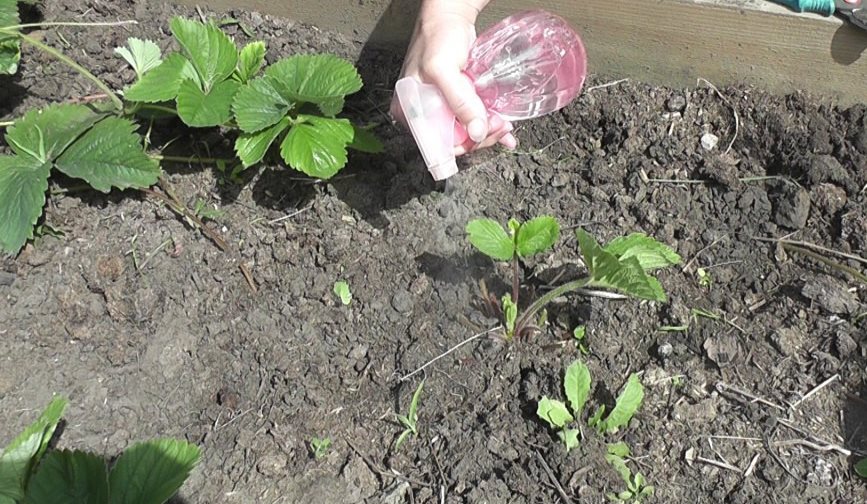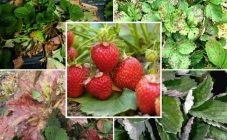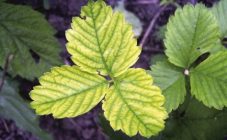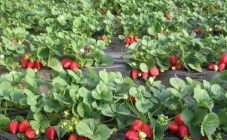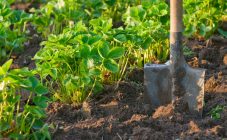Content:
Among the many diseases of strawberries, fusarium wilt has been increasingly talked about lately. With the expansion of online stores, seedlings are sold without proper sanitary control, even from nurseries, which can become a source of infection for the entire site. The way out is to thoroughly disinfect the planting material.
A detailed study of the dangerous disease of strawberries, which is the reason for the gradual wilting and death of the bush, began in the second half of the twentieth century. Most researchers are of the opinion that the causative agent of the disease is the fungus Fusarium oxysporum, which is activated during hot weather.
Fusarium symptoms
It is possible to determine which type of fungus affects a plant only in the laboratory. The first symptoms of fusarium are invisible, as the disease spreads in the soil, the roots are infected first. Usually, strawberries get sick during the whiskers and harvesting phase.
Externally, strawberry fusarium, or dry rot, is distinguished at the middle stage by signs of damage to the vascular system and tissues of the aerial part of plants:
- the disease first affects the roots, which rot, dry, then spread through the vessels up the plant;
- the leaves of the garden strawberry wither from below;
- the border of the upper leaves becomes watery;
- greenish-yellow spots are visible on the leaf blades;
- unripe strawberries do not develop;
- all the petioles and peduncles wither and turn brown, the rosette sinks, the bush slopes to the ground, as if from lack of water;
- if it is rainy weather, white mycelium can be seen on the leaves.
Plants die in 40-50 days. If the temperature during the summer cold snap drops to 15 ° C, strawberry bushes die faster. The fungus occupies all vessels, releasing toxins, due to which cells decompose. The cut of the petioles shows that the vessels have darkened. The center of the root also turns brown. Small roots are dark, dry.
How does the disease spread
The causative agent of fusarium wilt of strawberries enters the area with infected seedlings. Fungi are transferred not only on the roots of garden strawberries, but also with an infected part of any other plants. The following year, spores infect the crop planted on the site.
The defeat of strawberries with fusarium is focal in nature.
The infection is especially spread:
- in low-lying areas, where the soil is often wet;
- on acidic and heavy soils;
- when applying excess fertilizers with chlorine;
- in thickened plantings;
- with irregular watering.
Why is wilting dangerous
Fusarium can be spread in any climate through seeds or seedlings, on agricultural wheels or on work shoes. Underground "inhabitants" carry spores from diseased specimens to the roots of other plants. The whole plant is affected, dies and becomes the cause of disease in neighboring crops. Fungi parasitize weeds, tomatoes, potatoes, melons, berries and cereals, young fruit trees, bulbous flowers, spoil, including grains. From potatoes infected in basements, spores enter the soil, which becomes a source of new infections.There is evidence that spores have lived in the ground for 25 years.
Treatment methods
Removing the affected plants is the only correct answer to the alarming question of summer residents: how to treat fusarium wilting of strawberries? In the presence of this disease, it is necessary to cure the soil on which the affected specimen grew.
When the plant is removed from the garden:
- it is dug up with a lump of soil and thrown into a centralized dump or burned;
- wash shoes with soap;
- wipe the tools with technical alcohol.
The soil is treated with biological products, these are:
- Trichodermin (there is an analogue from another company - Glyokladin);
- Fitosporin-M;
- Potassium humate.
An effective remedy is Trichodermin, which is introduced into the soil 2 days before moving the bushes of garden strawberries. Before use, the area is watered per day so that the drug gets into a humid environment. The introduction of Potassium Humate increases the resistance of strawberries to the invasion of fungi, helps the seedlings to quickly adapt to new conditions after transplantation. The Fitosporin-M solution prepared according to the instructions is watered before planting or healthy bushes after removal of patients.
Traditional methods
If it is not possible to quickly apply an effective antifungal fungicide in order to save strawberry bushes that have not yet been affected by fusarium, they decide to try folk remedies.
Among summer residents, they exchange such recipes:
- 5 g of potassium permanganate is diluted in a bucket of water;
- in 10 liters of water dissolve 2 tbsp. l. soda and pour 5 ml of iodine, adding 20 g of diluted soap as an adhesive.
Both solutions are intended for spraying plants.
Treatment of uninfected bushes
Good-looking plants after sanitary removal of patients are sprayed or poured with fungicides according to the instructions:
- Topsin-M;
- Fundazol;
- Trichoderma Veride;
- Benorad;
- Sporobacterin;
- Winner;
- Benefit;
- Mikosan-V;
- Phytocide.
Or treated with a safe pink solution of potassium permanganate. Then the ground around the bushes is sprinkled with sulfur powder and wood ash.
Potassium permanganate is a kind of ambulance for a quick response when a disease is detected. Then they acquire fungicides, with which the site is guaranteed to be treated.
Fusarium is a serious disease affecting all crops. At the first sign of a withering strawberry bush, you need to dig it up and examine the roots. If the threat is confirmed, the site is treated with fungicides. Only these drugs are able to resist fungal invasion.
Biological substances Phytodoctor, Trichodermin will become guaranteed protection at the onset of the disease and as a prophylaxis. If there is a massive defeat, chemical fungicides are used: Benorad, Ordan, Horus or others that are developed by the industry every year. Some of them are designed for drip irrigation applications.
Prevention of the spread of the disease
The treatment procedures for strawberry fusarium include timely prevention:
- planting healthy seedlings;
- purchase of strawberry varieties resistant to fusarium;
- placement of bushes according to the scheme proposed for the variety, not thickening the rows;
- planting strawberries on lutrasil, black or silver film, since these materials inhibit the development of the fungus;
- systematic application of lime, dolomite flour and potassium oxide to the area with acidic soils;
- to prevent the development of fusarium, agents with zinc and bromine are applied to the site;
- spraying with prophylactic drugs: Trichophyte, Planriz and Bactofit of plants and soil.
A simple but effective method of protecting varietal garden strawberries is to water the bushes in June with a medicinal mixture: 1 g of potassium permanganate and 1 g of boric acid, diluted in a bucket of water. 2-3 liters are spent on a bush so that the earth is saturated with minerals. Experienced gardeners use the effective new fungicide Previkur Energy for root watering.
How to treat bushes before planting
Not every summer resident will like the idea of buying expensive imported hybrids. For novice farmers, the most accessible method is disinfection of the roots of purchased bushes or planting plantations on film.
The roots are soaked according to the instructions in the preparations:
- Agate-25 K;
- Potassium humate;
- Maksim;
- Baktofit;
- Fitosporin-M.
Alkalinization of acidic soils contributes to the death of fungi that do not multiply in a neutral environment. Strawberries are not planted in the place of development of fusarium for 6-7 years. It is believed that after treating the soil with the recommended means and a quarantine period of time, Fusarium fungi die.
In the fight against wilting of garden strawberries caused by fusarium, even potent substances may be powerless. Sometimes the rational solution is to change the seedlings and the site. Attention should be paid to the implementation of the rules of agricultural technology and the prevention of fungal diseases.
